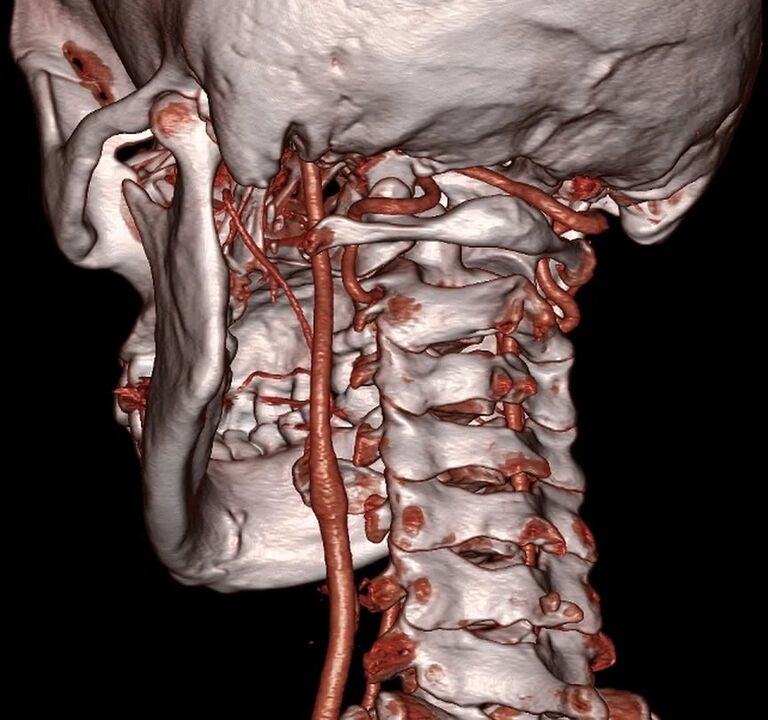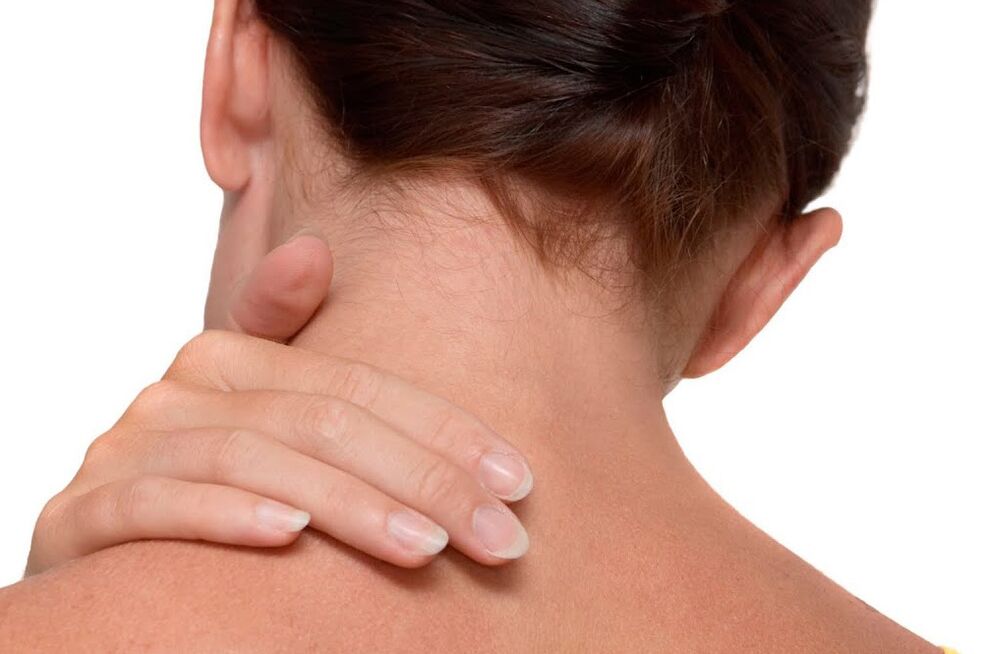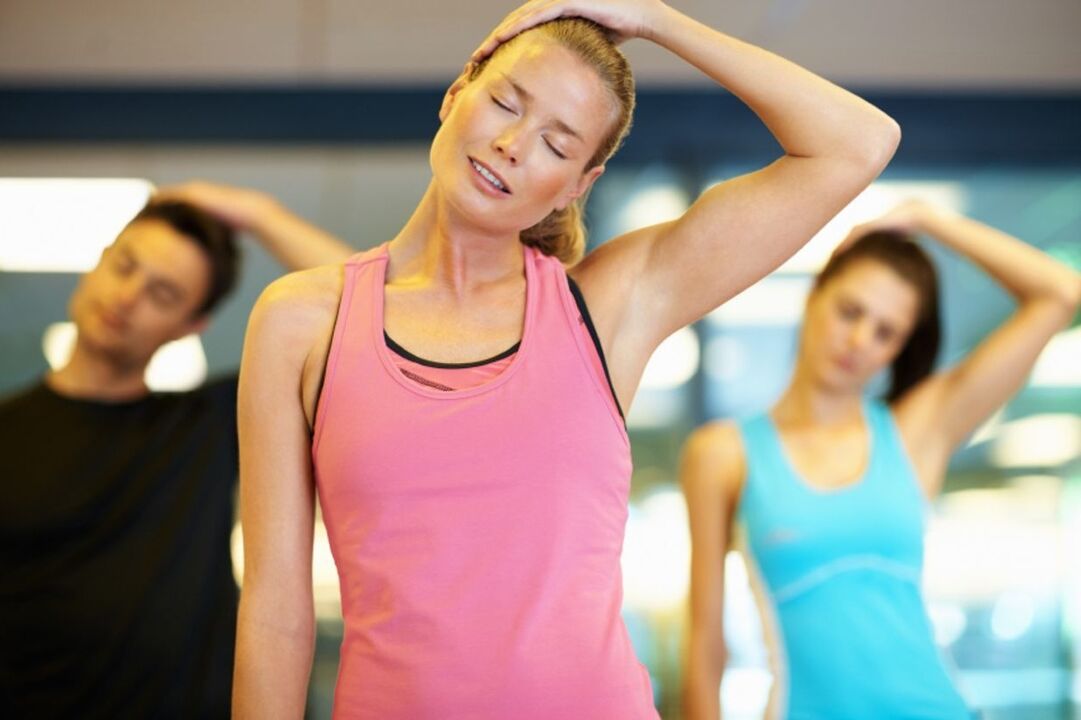Pain occurs when you are not expecting it. Even the most confident person can feel confused and scared in such cases. Often the cause of pain syndrome is osteochondrosis. How is cervical spine osteochondrosis treated at home and how effective is it? Let's find out more.
What is osteochondrosis?
Official medical sources interpret osteochondrosis as a degenerative disease that affects the intervertebral disc with involvement of adjacent vertebrae and joints. The elasticity of the intervertebral joint is impaired - and the intervertebral disc becomes thinner. It is necessary to understand how nutrition and metabolic processes take place in the intervertebral discs. This structural element is formed by cartilage tissue, there are no blood vessels here. Power is diffuse, like a pump. During the squeezing movement, a lubricating fluid is released and then absorbed again. If osteochondrosis of the cervical spine occurs, exercise therapy, massage, and all therapeutic techniques should be prescribed as soon as possible.
What changes occur in the spine and their symptoms
The following processes take place in the affected joint:
- the nucleus pulposus of the intervertebral disc loses physiological moisture;
- Cartilage loses its shape;
- loses its elasticity;
- changes color;
- dries up;
- turns yellow;
- loses resistance to damage.

The consequence of this is a violation of the synchronization of movements in the adjacent segments of the spine, a violation of the nerve roots. The main symptoms of degenerative changes are pain, restricted mobility, some forms of paresthesia ("creeping", tingling).
All of these changes indicate the presence of osteochondrosis. How is osteochondrosis of the cervical spine or others treated, we will talk further.
Why does osteochondrosis occur?
The causes of the onset of the disease include anything that interferes with the performance of the disk:
- Traffic jam due to static loads.
- Maintaining awkward positions, especially sitting, for long periods of time. There is a good saying, "If you can stand - don't sit, if you can lie - don't stand. "
- Traumatic effects on the endplates, fibers of the annulus fibrosus.

Common reasons are an unbalanced diet, lack of exercise, insufficient development of the deep muscles that make up the muscle corset. The stability of the spine is based on the complex interplay of bone, muscle and nerve structures in the skeleton. The abdominal and back muscles are antagonists that balance each other out. Therefore, the postulate "movement is life" remains topical as never before. Exercise can effectively influence the degenerative disc disease of the cervical spine. Exercise therapy is used both in a polyclinic and at homeThe neck and lumbar regions are more often exposed.
How does osteochondrosis of the cervical spine manifest itself?
The manifestations of osteochondrosis of various localization are grouped into syndromes:
- cervical syndrome (impaired mobility of the shoulder joint, pain of a different kind);
- cervicocranialgia (pain in the back of the head, neck discomfort, tinnitus, dizziness, palpitations, nausea);
- Cervicobrachialgia or shoulder scapular syndrome (neck pain flowing into the shoulder and arm).

If you are worried about aching pain, often at night, with numbness, the diagnosis will likely be confirmed - osteochondrosis of the cervical spine. The pain syndrome associated with disorders of this department is called thoracic algia.
Home physiotherapy
How the osteochondrosis of the cervical spine is treated with medication is described in many specialist books. But in most cases the effects of the drug are short-lived. Exercise therapy can help here.

- We stand against the wall and lean against it with the back of our head. We try to push against the wall with maximum force for a few seconds. Then we relax.
- We sit down at the table, put our elbows on it. We prop our chin on our hands and try to press down on the palms of our hands as we try to tilt or turn our head to the side.
- Lean your head on your hands on the back of your head. Then take turns pressing it with the back of your head, then relax. Do multiple repetitions with hold times of up to 10 seconds.
- Grasp your head in your palms and press alternately on one hand or the other.
During exacerbations, exercises are carried out with a duration of no more than 3-4 seconds and with moderate exertion. Classes will slow down osteochondrosis of the cervical spine. At home exercises can be started after you are satisfied that they are being performed correctly in a healthcare facility.
Massage without professional help
When the diagnosis of osteochondrosis of the cervical spine is confirmed, one of the necessary treatments is massage. In this case, it is not only a useful, but also an irreplaceable procedure. First of all, it is better to take a professional course, and then do simple techniques yourself at home. These techniques include the technique of post-static muscle relaxation. The peculiarity of the method consists in the passive stretching of the muscle from the overload position in combination with massage elements. It is necessary to apply the technique after warming up the spasmodic muscles (bath, hot compress, kneading, caressing).

Self-massage uses the same techniques as professional ones. These are brushing, kneading, precise whipping, knocking, shaking. The massage is performed with warm, warm hands. Use massage oil to improve glide. The order of the techniques is as follows:
- stroke;
- Trituration;
- Knead;
- Vibrations (knocking, shaking).
Acting on the osteochondrosis of the cervical spine, the massage begins and ends with caressing.
A little manual therapy
- We sit in a high-backed chair. We clasp the head with our hands and place our thumbs on the cheekbones (more precisely on the bumps under the eye sockets). We lift our eyes, take a deep breath and press the back of our head on our fingers. We hold for up to a quarter of a minute, then lean back on the back of the chair as we exhale and relax the neck muscles by tilting our head down. We repeat the technique several times. Then we put our fingers around the neck, closer to its upper part, and tilt our head slightly forward. We press our fingers into the base of the skull and make a slow rotational movement. Gradually lower your fingers and approach the trapezius muscle. How to treat osteochondrosis of the cervical spine with the help of manual therapy, see the manipulations below.
- We lie on our back and pull our shoulders down as far as possible. Place your hand on the painful side under your buttocks, palm up. Put your other hand under your head, grasp the back of your head, and tilt your head to the side opposite the problematic side. Inhaling, press your head on your fingers for 15 seconds. As you exhale, relax and pull your head a little tighter to stretch the sore muscles.

A series of measures used to treat osteochondrosis
Unfortunately, it is impossible to completely defeat cervical osteochondrosis. Treatment at home or in a medical facility should be comprehensive. This includes the use of:
- Painkiller;
- Muscle relaxants that relieve muscle spasms;
- Drugs with a chondroprotective effect;
- physiotherapeutic procedures;
- Massage;
- Exercise therapy;
- balanced nutrition.
While studying the medical literature one can draw certain conclusions about the treatment of cervical osteochondrosis, not receiving properly prescribed treatment is an anti-health crime.





































